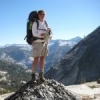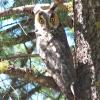It has been 4 summers now that I have been researching to whatever degree the notion of the Urban Bigfoot, what I have discovered is wherever there is ample greenway and food sources with water, adjacent to larger tracks of open land, you will find an occasional sasquatch family using the area. The problem is how can you know exactly when these intrusions into the more populated areas occur? I will tell you that it happens after the point the foliage becomes full. It really depends also on the resources they might be capitalizing on. My backyard marsh becomes 7 foot cattails in later June, they seem to visit the area shortly after that, earlier in the month the cattails are about waist high. Is it simply a matter of cover, or is their a resource like the cattail tuber they might be eating? If I were to look at a map of any urban area I would first look for the streams and rivers, then larger greenways both connected to larger outer open tracks and small inner greenways. This would be my first thought, then I would visit the BFRO and John Greens Data base and see where sightings in an area have occurred, I can tell you with a fair degree of certainty the two will line up. Rivers, streams and sasquatch. Now examine the types of resources they might capitalize on, berries, apple orchards, marsh tubers, and of course the occasional deer or coyote and smaller protein sources like frogs and fish. I am certain that if an area has an abundance of a certain resource at a given time of year that is one narrowing down factor, now find several of those factors in proximity both in location and timing, your getting closer. The more of those you can put together the closer you are to saying they will be in a certain area at a certain time. Case in point, farm fields with available crops, river with fish and crayfish and shellfish, deer population, organic food sources like berries, tubers, et, find as many in close proximity and availability and begin your research.
I live adjacent to the Fox River, in this area we have a chain of lakes, I live in the center of all the lakes on an Island of sorts, although it is only so because of a narrow channel that is bridged in several places. On this river, only a couple of miles north of me is a state park with large open areas. There are vast open marsh areas and protected pockets of forest within those areas, current food sources in my area are plentiful including berries, marsh tubers, fish, deer, coyote, new crops like soybeans and corn just beginning to bear fruit, and plenty of local gardens about to do the same. Besides that you have local bird feeders of all shapes and sizes, large frog and reptile populations, smaller mammals in abundance, and fruit bearing trees nearly ready to bear ripe fruit. I would say that spells ample food sources and protection.



